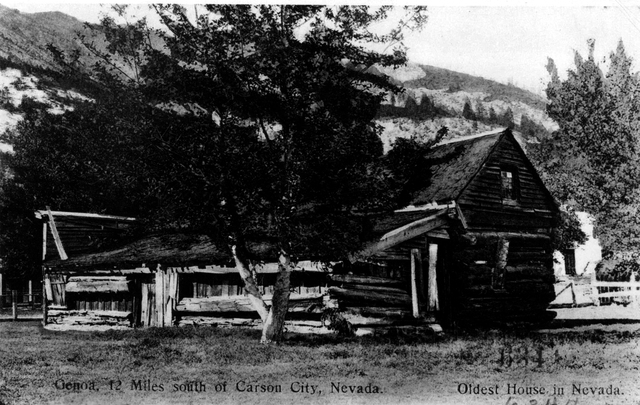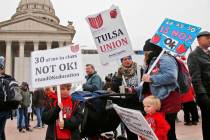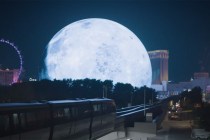Mormons left their mark on Nevada
Editor’s Note: Nevada 150 is a yearlong series highlighting the people, places and things that make up the history of the state.
Our state could have been called Deseret instead of Nevada.
Seriously.
In 1849, the Church of Jesus Christ of Latter-day Saints applied for statehood for an area that included most of Nevada and Utah, and parts of California, Arizona, Colorado, New Mexico, Wyoming, Idaho and Oregon.
But it wasn’t meant to be.
The proposal was denied by the federal government, however, portions of Nevada became part of the Utah Territory in 1850. At the time, Latter-day Saints were already inhabiting the area now known as Genoa as the first permanent non-native residents.
The area now makes up Mormon Station State Historic Park, about 500 miles northwest of Las Vegas.
According to information from the Nevada Division of State Parks, “two members of the Mormon Battalion, Abner Blackburn and Hampton Beatie, established a temporary trading post on the west side of Carson Valley.”
Documents in Brigham Young University’s Harold B. Lee Library say the would-be gold miners constructed Nevada’s first log cabins. Their trading post was built to supply others en route to gold fields in northern California.
In 1851, their employer, John Reese, and his nephew, Stephen Kinsey, built a permanent trading post about a mile south of the original. The newer post had a blacksmith shop, livery stable and flour and saw mills.
By 1854, the trading post and the community that grew up around it were being led by Mormon apostle Orson Hyde, who was appointed probate judge and spiritual head by Utah Territory’s governor, Brigham Young.
By then the trading post area was being called Carson County, Utah. Hyde soon changed the name to Genoa after the city in Italy and made it the county seat.
According to information from the BYU library, Hyde called for more LDS settlers to establish political control of the area and to proselytize and “civilize” the resident native Americans. Eventually about 250 Latter-day Saints arrived. When they did, disagreements developed between them and non-Mormons who had migrated to the area and resented LDS political control.
Genoa was home to the Mormon pioneers until 1857, when Young called all church members back to defend Salt Lake City from the U.S. Army.
In the southern part of the state, a group of 30 Mormon missionaries led by William Bringhurst in 1855 built a 150-foot adobe fort on Las Vegas Creek. The group made up the first permanent non-native settlers in the Las Vegas area.
The fort was a way station for travelers and featured a post office, while the creek helped the group farm fields and orchards.
When they discovered lead in the southwestern mountains of the Las Vegas Valley, they also tried to mine, but were unsuccessful because they couldn’t separate the silver entwined in the ore. The group mostly left the area in 1857 after they also received word of the Army advancing on Utah. While in Las Vegas, the group also worked to proselytize local native Americans. Today the Old Las Vegas Mormon Fort is at 500 E. Washington Ave. and is a part of the state park system.
According to the BYU library records, Young sent colonists to settle on the Muddy River in 1865, in the area now known as Moapa Valley. They were charged with growing cotton, but Nevada Territory was expanded south and by 1871 the settlers were ordered to pay back taxes.
Most Mormons abandoned the area as a result. Even so, the Latter-day Saints who settled the area north of the Muddy River in 1864 remained in the area. Panaca, especially, has remained largely LDS, according to BYU records.
Another Mormon settlement in Nevada, Bunkerville, was colonized in 1877 by Edward Bunker on orders from Young in Salt Lake.
In 1898 the LDS settlements of Lund, Preston and Georgetown were established in White Pine County on land ceded to the church in lieu of property confiscated under the provisions of the Edmunds-Tucker Act of 1887.
Contact reporter Laura Carroll at lcarroll@reviewjournal.com or 702-380-4588. Follow @lscvegas on Twitter.
















